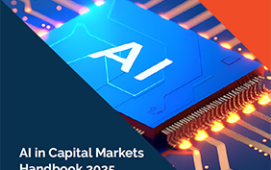The appointment of Peter Moss as CEO of SmartStream’s Reference Data Utility (RDU) signals renewed energy behind the utility and a drive to move beyond early users and make the RDU a solution for many financial institutions, as well as a commercial success for SmartStream.
Moss joined the company in August, a year or so after leaving Thomson Reuters with a view to retiring. He is based in London and has full responsibility for the RDU. SmartStream president Philippe Chambadal, who previously had oversight of the RDU, has stepped aside and will no longer work on it. Instead, he will continue to focus on a range of other strategic initiatives and anticipated acquisitions across the company.
We caught up with Moss to find out more about his move to SmartStream and his plans for the RDU. He explains: “The role of CEO at SmartStream RDU was particularly attractive as I think the reference data utility concept has come of age. The timing is right and there is appetite among financial institutions to take this on. Just as important is the quality of the bank names that are backing the utility.”
The RDU was established by SmartStream and leading banks Morgan Stanley, Goldman Sachs and JPMorgan Chase. Morgan Stanley, a previous user of SmartStream managed services, has gone live with the utility, while Goldman Sachs and JPMorgan Chase are in the process of onboarding.
While these banks have been critical to the initial development of the RDU and will continue to ensure that it delivers a successful utility capability, Moss says: “My goal is to make the RDU an industry success for all parties involved. For financial institutions, the utility can simplify data management, and it could make a big impact on how the market operates. It can deliver effectively, will scale well and we intend to build it out to cover a complete set of asset classes.”
Moss acknowledges that many financial institutions using data for many different applications question how they can start to work with the RDU, but says the company will help them confront the challenge piece by piece and make sure the utility service is delivered to customers in a way that suits them. He adds: “We are solving problems banks have dealt with for a long time. As we move forward, the more input we have, the better the RDU will get.”
The RDU’s founding banks and a handful of other early adopters are mainly using the utility to support data requirements for trade processing and regulatory reporting. In terms of data sources, the company is already working with a number of data vendors, a notable exception being Bloomberg, and hopes to get them all on board over time. Moss comments: “Most data vendors have realised we are a proxy for their customers.”
Moss doesn’t rule out competition in the reference data utility space, but does not expect it to come from vendors of enterprise data management (EDM) solutions. As many financial institutions have already implemented EDM solutions, he expects their providers will become partners of the RDU.
Meantime, Moss leads a growing team of about 200 people across the US, Europe and India, and says the next marketing push for the RDU will be across the Americas and Europe.
Subscribe to our newsletter




